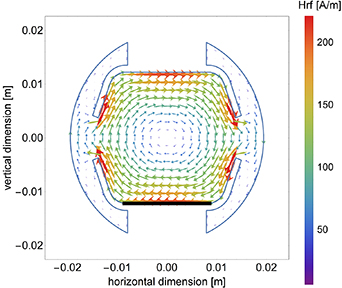
Evaluation of the nonlinear surface resistance of REBCO coated conductors for their use in the FCC-hh beam screen
Authors: P Krkoti´c, A Romanov, N Tagdulang, G Telles, T Puig, J Gutierrez, X Granados, S Calatroni, F Perez, M Pont and J M O’Callaghan
Supercond. Sci. Technol. 35 (2022) 025015 (11pp)
Abstract: To assess the feasibility of using high-temperature superconductors for the beam screens of future circular colliders, we have undertaken a study of the power dependence of the microwave surface resistance in state-of-the-art REBCO coated conductors at about 8 GHz and 50 K. We have employed a dielectric resonator to produce radio-frequency (RF) electromagnetic fields on the surface of the coated conductors having amplitudes similar to those generated by proton bunches circulating in the vacuum chamber of the proposed future circular collider Hadron-Hadron (FCC-hh) at CERN We show that surface resistances in REBCO coated conductors without artificial pinning centers are more affected by a RF magnetic field than those containing nano-inclusions. Despite that, at 8 GHz, 50 K, and 9 T, most REBCO coated conductors studied outperform copper in terms of surface resistance, with the best sample having a 2.3 mΩ surface resistance while being subject to an RF field 2.5 times stronger than that in the FCC-hh. We also extrapolate the measured data to 16 T and 1 GHz, the actual FCC-hh dipole magnetic field, and the mid-beam frequency spectrum, demonstrating the possibility of lowering the surface resistance of the vacuum chamber by up to two orders of magnitude compared to copper. Further, we discuss the correlation between the time structure of the electromagnetic fields provided by vector network analyzers compared to the proton bunches’ time structure in the collider and present the effect of low alternating magnetic fields on vortex displacement and the possibility of demagnetization of superconducting samples.
